Ancient Mystery Of Baktiotha And The Egyptian Spell Book
A. Sutherland AncientPages.com - Scientists have successfully deciphered a 1,300-year-old Egyptian spell book, but there are still many unanswered questions.
We do not know the true origin of the book. The identity of a mysterious divine figure named Baktiotha who mentioned in the book is also shrouded in mystery. Neither do we know who the owner of the book was.
Like so many other ancient cultures spells and dreams played a significant role in the live of the Ancient Egyptians. With help of dreams it was possible to foretell the future and spells could be used against someone's enemy, treat illness and solve all kind of daily problems. At least that if what the ancients believed.
The ancient Egyptian Dream Book, a hieratic papyrus probably dates to the early reign of Ramesses II (1279-1213 BC). Dreams were considered to be divine predictions of the future. They were messages from the gods that could be foretelling of impending disasters or, conversely, of good fortune; therefore, understanding the significance of ones dreams was an important part of the culture.
The study of ancient spells is also a fascinating subject.
In 1981, Australia's Macquarie University purchased a book of bound parchment-a codex-from a Viennese antiquities dealer.
How far back its origins stretch is less known, but it's believed to be about 1,300 years old and hail from Upper Egypt (it's written in Egypt's Coptic language).
Now, two Australian professors have pored over its 20 pages, and describe it as "the handbook of a ritual practitioner."
In their own book, A Coptic Handbook of Ritual Power, Malcolm Choat and Iain Gardner explain just what they deciphered: invocations and 27 spells designed "to cure demonic possession, various ailments, the effects of magic, or to bring success in love and business," per their publisher.
"It is a complete 20-page parchment codex, containing the handbook of a ritual practitioner," write Malcolm Choat and Iain Gardner, who are professors in Australia at Macquarie University and the University of Sydney, respectively, in their book, A Coptic Handbook of Ritual Power"
At the beginning of the book, there is "a lengthy series of invocations that culminate with drawings and words of power," the authors write.
"These are followed by a number of prescriptions or spells to cure possession by spirits and various ailments, or to bring success in love and business."
See also:
The Egyptian Dream Book Reveals Ancient Predictions Of The Future
Legend Of Baku – The Dream Eater – Was It An Ancient Supernatural Being?
Are Some Of Our Dreams Glimpses From A Parallel Universe?
The codex also contains a number of invocations referencing Jesus. Some of the invocations appear to be associated with the Sethians, a Gnostic sect during the Roman era. As the name suggests, the Sethains considered themselves to be the "seed of Seth," the third son of Adam and Eve; the Seed of Seth was the section of humanity that had received Gnosis and would thus have a different fate than the offspring of Cain and Abel. They also referred to themselves as "the generation of Seth", or "the immoveable race." Church leaders thought Sethians to be heretics and by the time the book was written, they had been all but wiped out.
The authors believe the handbook could be a transitional text created before all the Sethian spells had been purged. It is possible that the spells were originally from separate books, but were later combined to create a "single instrument of ritual power".
At the beginning of the codex we can read about a divine figure named "Baktiotha" whose identity is a mystery, researchers say. The lines read, "I give thanks to you and I call upon you, the Baktiotha: The great one, who is very trustworthy; the one who is lord over the forty and the nine kinds of serpents," according to the translation.
"The Baktiotha is an ambivalent figure. He is a great power and a ruler of forces in the material realm," Choat and Gardner said at a conference, before their book on the codex was published.
It remains unknown who used the codex. There is no evidence the spell book was used by a priest or monk.
"It is my sense that there were ritual practitioners outside the ranks of the clergy and monks, but exactly who they were is shielded from us by the fact that people didn't really want to be labeled as a "magician,'" Choat said.
Some of the language used in the codex suggests that it was written with a male user in mind, however, that "wouldn't have stopped a female ritual practitioner from using the text, of course," he said.
Written by - A. Sutherland - AncientPAges.com Senior Staff Writer
Copyright © AncientPages.com. All rights reserved. This material may not be published, broadcast, rewritten or redistributed in whole or part without the express written permission of AncientPages.com
More From Ancient Pages
-
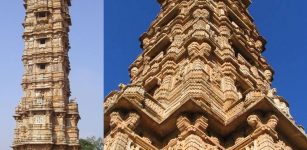 Victory Tower – An Imposing Victory Monument In Chittorgarh, Rajasthan, India
Civilizations | Jul 28, 2015
Victory Tower – An Imposing Victory Monument In Chittorgarh, Rajasthan, India
Civilizations | Jul 28, 2015 -
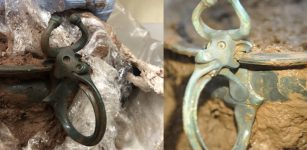 Magnificent 2,000-Year-Old Treasure Found In Wales Could Point To An Unknown Roman Settlement
Archaeology | May 12, 2023
Magnificent 2,000-Year-Old Treasure Found In Wales Could Point To An Unknown Roman Settlement
Archaeology | May 12, 2023 -
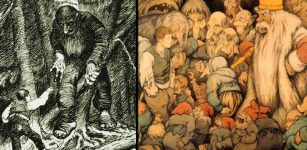 Trolls – Fascinating Mythical Creatures Of Scandinavia
Featured Stories | Jun 13, 2022
Trolls – Fascinating Mythical Creatures Of Scandinavia
Featured Stories | Jun 13, 2022 -
 Why Do Some Men Think Often About The Roman Empire?
News | Oct 4, 2023
Why Do Some Men Think Often About The Roman Empire?
News | Oct 4, 2023 -
 Archaeologists unearthed artifacts in a 3,700 year-old mine factory
Artifacts | Aug 22, 2015
Archaeologists unearthed artifacts in a 3,700 year-old mine factory
Artifacts | Aug 22, 2015 -
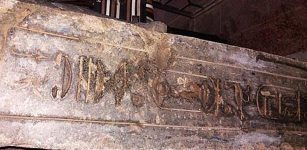 Black Granite Statue Of King Amenhotep III Accidentally Recovered
Archaeology | Jan 1, 2016
Black Granite Statue Of King Amenhotep III Accidentally Recovered
Archaeology | Jan 1, 2016 -
 Is Mysterious Pokaini Forest An Ancient Healing Center And Anomalous Zone?
Featured Stories | Aug 13, 2018
Is Mysterious Pokaini Forest An Ancient Healing Center And Anomalous Zone?
Featured Stories | Aug 13, 2018 -
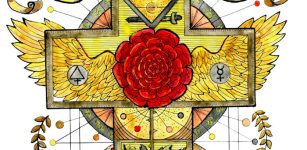 Rosicrucians: Facts And History About The Mysterious Secret Society
Featured Stories | Oct 20, 2016
Rosicrucians: Facts And History About The Mysterious Secret Society
Featured Stories | Oct 20, 2016 -
 Ancient DNA Pushes Herring Trade Back To The Viking Age
Archaeology | Oct 26, 2022
Ancient DNA Pushes Herring Trade Back To The Viking Age
Archaeology | Oct 26, 2022 -
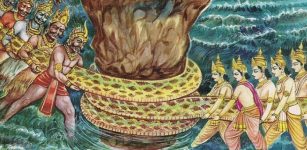 Churning Of The Ocean: Great Hindu Story Of Creation From Mahabharata And Purana
Featured Stories | Jun 16, 2018
Churning Of The Ocean: Great Hindu Story Of Creation From Mahabharata And Purana
Featured Stories | Jun 16, 2018 -
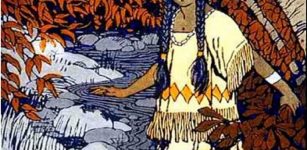 Nimerigar: Mythological Race Of Little People Living In Wyoming
Featured Stories | Jun 7, 2017
Nimerigar: Mythological Race Of Little People Living In Wyoming
Featured Stories | Jun 7, 2017 -
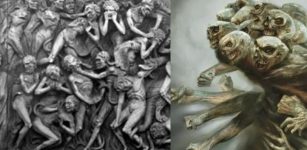 Utukku: Sumerian Spirit From The Underground That Obeyed The Will Of God Anu
Featured Stories | Jun 17, 2016
Utukku: Sumerian Spirit From The Underground That Obeyed The Will Of God Anu
Featured Stories | Jun 17, 2016 -
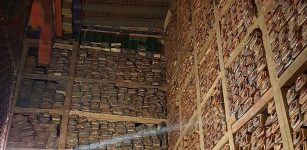 Great Sakya Library Is Home To 84,000 Scrolls Left Untouched For Hundreds Of Years
Featured Stories | Jul 22, 2021
Great Sakya Library Is Home To 84,000 Scrolls Left Untouched For Hundreds Of Years
Featured Stories | Jul 22, 2021 -
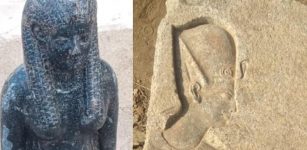 Artifacts Unearthed In Mit-Rahina, South Of Giza, Egypt
Archaeology | Jul 29, 2020
Artifacts Unearthed In Mit-Rahina, South Of Giza, Egypt
Archaeology | Jul 29, 2020 -
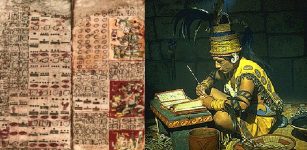 Mysterious Ancient Mayan ‘Copernicus’ And The Venus Table Of The Dresden Codex: The Hieroglyphs Have Been Misunderstood – Researcher Says
Archaeology | Aug 23, 2016
Mysterious Ancient Mayan ‘Copernicus’ And The Venus Table Of The Dresden Codex: The Hieroglyphs Have Been Misunderstood – Researcher Says
Archaeology | Aug 23, 2016 -
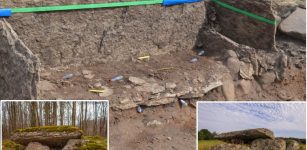 Mystery Of The Unique Tiarp Dolmen – One Of Oldest The Stone Burial Chambers In Scandinavia
Archaeology | Jan 30, 2024
Mystery Of The Unique Tiarp Dolmen – One Of Oldest The Stone Burial Chambers In Scandinavia
Archaeology | Jan 30, 2024 -
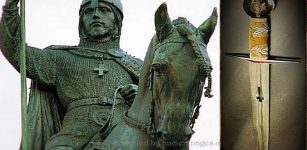 Prince Wenceslaus Of Bohemia Murdered On Order Of His Own Brother
Featured Stories | Nov 19, 2019
Prince Wenceslaus Of Bohemia Murdered On Order Of His Own Brother
Featured Stories | Nov 19, 2019 -
 On This Day In History: Gold Discovery In The Yukon – On August 16, 1896
News | Aug 16, 2016
On This Day In History: Gold Discovery In The Yukon – On August 16, 1896
News | Aug 16, 2016 -
 Evidence Humans Used Fire 1 Million Years Ago In Israel Discovered By Artificial Intelligence
Archaeology | Jun 15, 2022
Evidence Humans Used Fire 1 Million Years Ago In Israel Discovered By Artificial Intelligence
Archaeology | Jun 15, 2022 -
 Centuries Old Pub Discovered In Dover, England
Archaeology | Oct 28, 2024
Centuries Old Pub Discovered In Dover, England
Archaeology | Oct 28, 2024


